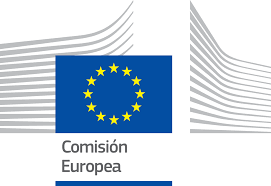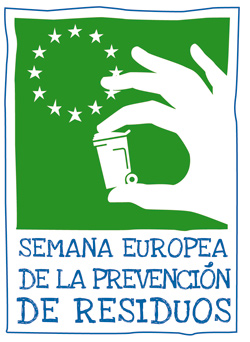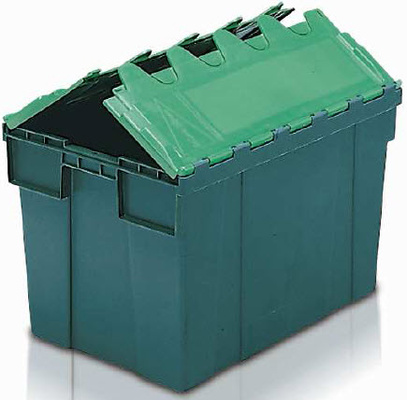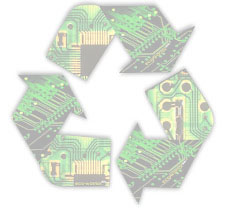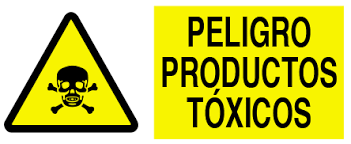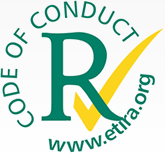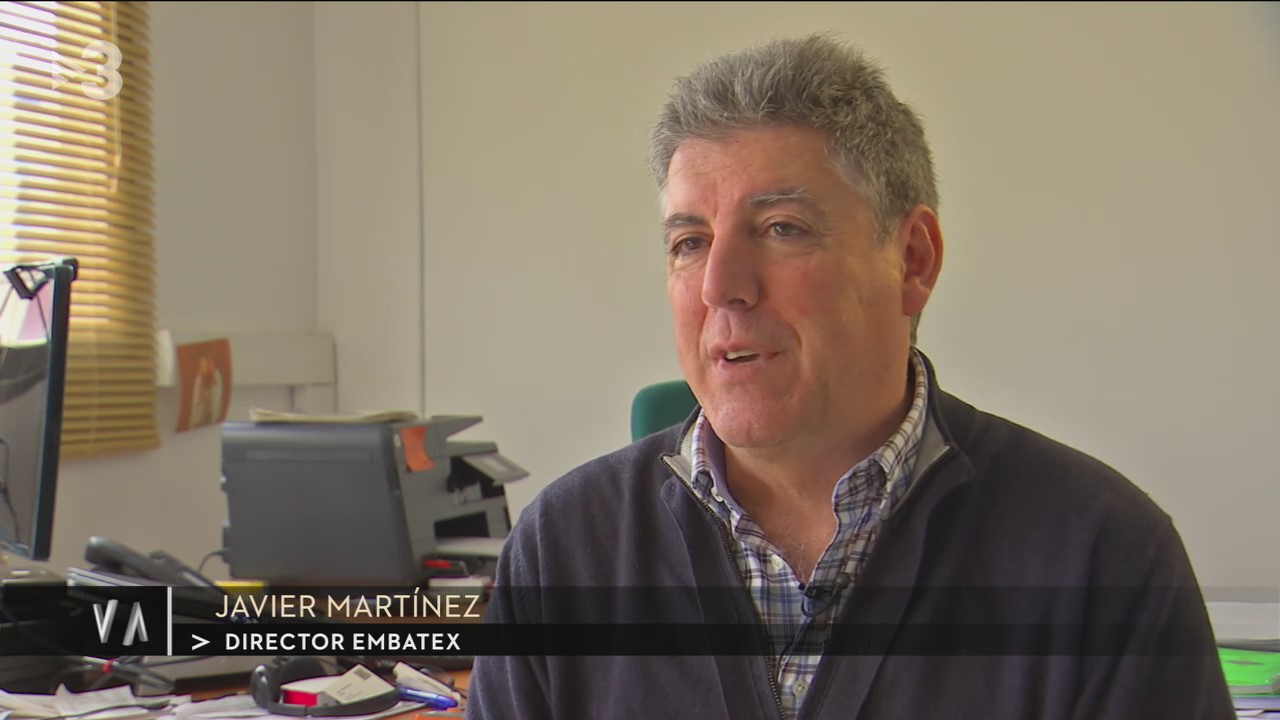Printer Phoenix gives its point of view on the New European regulation on the reuse of cartridges
STUDY OF THE IMPLEMENTATION OF THE DESIGN REQUIREMENTS IN ACCORDANCE WITH ARTICLE 4 OF THE WASTE DIRECTIVE
THE CASE OF CARTRIDGE REUSE.
MADE AND PREPARED BY OAKDENE HOLLINS FOR THE EUROPEAN COMMISSION JANUARY 2018
![]()
Synthesis and Opinion of Printer Phoenix
Synthesis:
The objective of the study is to provide the European Commission’s Directorate for the Environment with facts and evidence that allow knowing the level of implementation of article 4 of Directive 2012/19 / EU (WEEE Directive) on the reuse of cartridges
The project has generated recommendations for the Commission’s consideration to achieve the full potential objectives, to identify weaknesses in the Voluntary Agreement associated with Article 4, as well as broader measures to strengthen the market.
The document has been produced based on surveys that included equipment manufacturers (OEMs), the remanufacturing industry, retailers and providers of printing services among others.
It has collected qualitative and quantitative information on new and remanufactured cartridges by both OEMs and third parties.
This information was both volumetric and economic
It has also collected market information on commercial practices for the sale of new cartridges as well as remanufactured ones and the barriers and possible activators of the same.
The market is mature and there is competition, although the regulatory framework is not adequate to promote reuse.
Opinion:
It is difficult not to find a tremendous similarity between the automobile market situation prior to the regulation promoted by Commissioner Monti at the beginning of this century and not without great fanfare from the manufacturers
Although the market is “apparently” Competitive, this point is more than debatable since it is in the Oligopoly regime and the price differential between small and large consumers is very far from any other mature market and the only explanation for the non-appearance of new intermediaries / distributors is that sales are protected by agreements
In this way, small consumers pay subsidies to large ones to obtain the required average margins.
SUMMARY:
The objective is to provide the Environment Department with the evidence to evaluate the implementation of Article 4
The project has generated Specific Recommendations for the consideration of the Commission both to overcome the weaknesses of the Voluntary agreement, and to implement broader measures that improve the markets for new and remanufactured cartridges.
Thus three tasks associated with:
- Task One: Qualitative-Quantitative Analysis of the Cartridge Market
- Task Two: Identify and Evaluate Actions Taken by States and Industry for the Full Development of WEEE
- Task three: Present proposals and recommendations for more ambitious actions of the states and sectors of interest
Market:
The market size is € 9.4 billion for ink and € 10.2 billion for toner, representing 370 million units for ink and 135 million for toner.
Supply is dominated by equipment manufacturers
The collection figure thanks to systems driven by manufacturers is approximately 18% for ink and 25% for toner, although the reusable fraction is between 75-80%.
Therefore, there is a GREAT technical POTENTIAL for their collection and reuse, diverting them from recycling and energy recovery.
It is estimated that the Clone market represents 5% (¿?) Although it is a high source of concern both for patent infringement, quality of construction and components, potentially dangerous substances and end of life
![]()
The estimate of clones, although it may be an average data, does not behave in a similar way in all markets, for example in Spain it exceeds the figure of Remanufactured and its share is close to 20%
In countries like Spain and Italy the situation is extremely serious
The CLONICO enter in an uncontrolled way and most of the time they avoid the records (and therefore the payment of fees) as well as taxes such as VAT if they come from electronic commerce
The Absolute failure of the collection objectives by the Manufacturers is verified as the figure is well below what it should be (Less than 30% estimated when at this point it should be 65-85%)
Market players and supply chain
The Remanufacturing market is focused on operators other than equipment manufacturers in general, medium and small companies.
If the market behaves like the operators interviewed for this study, these are companies that take both quality and the environment very seriously.
Average sales prices represent savings compared to new ones of around 50%
Original OEMs are always multinational companies with sales in Europe exceeding € 50M
Although they all have carcass recovery programs, only 3 of the 11 responded that the destination is Reuse.
The rest recycle the materials of what they recover (remember less than 30%) between a percentage between 65 and 100% and continue to prioritize recycling over reuse
![]()
Remanufacturing companies are serious in general and manufacturers with few exceptions have ignored the priority of reuse
Actions of member countries
All states have introduced WEEE-compliant measures
There is no country that has taken direct action on printer cartridges
Countries have developed different measures without there being a correlation between measures adopted and success in action
Success is more a function of effectiveness in implementation, control and compliance measures, and sanctions regime, although these are linked to the country’s culture.
Extended Producer Responsibility solutions are too weak to promote reuse. This is due to the very low tax that manufacturers pay for waste management, not allowing adequate recovery for reuse.
Waste management can vary significantly between true manufacturers than between mere licensees.
Hardly a company that lacks production structures and outsources production will be interested in installing Remanufacturing structures, much more labor-intensive. This is the case of HP in Toner or when platforms are shared.
The allocation of human resources to these tasks collides head-on with the vast majority of OEM strategies, embarked on generalized staff reductions.
OEM activities regarding Article 4
Most of the activities obviate the objective of reuse and focus on facilitating the recycling of materials
There is no evidence of collaboration between OEMs and remanufacturers.
Some recent developments seek a lower impact from consumables, notably Epson’s Eco-tanks and Kyocera’s long-life drums
Comments Printer Phoenix
Collaboration between OEMs and the industry should be facilitated in several ways, which could include:
- A forum where both are represented and that meets every six months.
- The preparation of public contracts where reuse is Mandatory and entails contractual advantages.
- Require in all contracts a mandatory remanufacturing plan and evaluation of the total waste generated with special emphasis on reuse, not only of cartridges but also of maintenance parts.
Eco-Design Directive and Voluntary Agreement
Since 2012, manufacturers and to avoid tougher legislation, established a voluntary agreement to improve the impact that these devices generated in Europe
The signatories (11) accepted the use of cartridges that did not impose obstacles to reuse, as well as not to hinder the use of cartridges manufactured by third parties.
To do this, they established an entity (EuroVAprint) that should be responsible for collecting the information to monitor these commitments.
La información que estos han recabado no incluye ninguna información cualitativa ni cuantitativa que pueda demostrar el progreso en la reutilización.
![]()
After several years of “goodwill” strategies, but without clear sanctioning regulations, there is a general doubt that in case of not legislating, everything will remain the same. Is the voluntary agreement sufficient? Our opinion is that no and that it will be necessary for the authorities clearly regulate in a manner analogous to what happened in the Automobile
It is unacceptable for EuroVAprint to have acted with absolute negligence in disregard of its commitments and obligations, bypassing the WEEE mandate as regards the waste hierarchy and even casting doubt on it in a partial way and biased by clear commercial interests of the members.
The total lack of complaint and sanctioning measures have caused the absolute failure of this initiative, on the contrary, increasing the impact of cartridges as there are more and more models on the market and especially color
Effect of eco-labels
Of the three largest ecolabel schemes in Europe (EU ecolabel, Nordic Ecolabel and Angel Azul) there are no printer licenses under one (Eco Label) but substantial numbers over the others
In June 2017, the Commission completed an analysis of the Ecolabel for Printers and its lack of success. The decision was to cancel the process
However, the questionnaires to the actors involved considered the creation of an eco-label for the cartridges to be very relevant and especially in the GPP, and this interest is reinforced by the results of our study.
![]()
This is undoubtedly the point that in my opinion is not fully worked.
On the one hand, the failure of the Eco-label of the Printing equipment is due, and this is an opinion, to the boycott of the manufacturers, something that should not be surprising since there is also a boycott of the standards of cartridges and eco-design as well. as in the voluntary agreement.
With the same or higher level of technical requirements in the USA, there are hundreds of teams distinguished with the EPEAT Gold accreditation, only that it is required and scored there.
The standards of the other schemes present a pattern in which it is clearly appreciated that commercial interests have directed the market, in such a way that Printer manufacturers have directed the Blue Angel while those of cartridges have directed the Nordic Eco label
Therefore, and to prevent commercial interests from defining the market in an oligopolistic way, an eco-label is necessary for cartridges
Areas of concern and potential actions.
The study has identified concerns and corrective actions at many points in the supply chain and in relation to the different actors categorized as follows:
Concerns
-Creating a level playing field for new and remanufactured cartridges
-Consolidation of the patent rights of OEMs and the right to a second and exhausted use of these patents after the sale
-Improve the design for the reuse, subsequent recycling and recovery of materials
-Ensure the performance of the reused cartridge
-Ensure reuse data tracking
Several measures are proposed to improve the market situation for both new and reused cartridges.
-Address the importation of Clones
-Ensure the correct labeling and prevent the actors from inducing to think that they are OEM Cartridges.
-Improve all stakeholders’ access to cartridge design and technical specifications
-Review the GPP, sustainable public purchasing and address the aspects of “Reuse and refilling”
-Improve user information on all cartridges and their packaging to reveal actual performance
-The creation of a measurement system for users for quality in line with product expectations
-Rationalize the use of acceptable phrases to describe both new and reused cartridges
-Review the voluntary agreement so that the data on recovery and remanufacturing, recycling and any recovery operation is continuously collected and published
-Expand the scope of cartridge manufacturers to promote and support reuse as an alternative to simple recovery
SCENARIO FOR FUTURE ACTIONS
The actions mentioned above globally represent a relatively moderate change over the prevailing model in legal and administrative terms.
The findings show that it is a mature market where the actors behave in a rational way from the legal point of view and commercial practices
However, this does not mean that from an efficiency point of view the situation is optimal.
The cartridge reuse rate is below 30% but could be substantially higher from a technical point of view.
The fact that some original OEMs have incorporated cartridge reuse models without impacting print quality unequivocally indicates that higher reuse rates are possible.
Advances have also been made in solid inks and “Container Only” systems, which means a model shift towards higher initial investment and equipment with more robust components. This model undoubtedly brings greater environmental benefits
As indicated above, there is a mature market model where you compete for share and to maintain profit.
The model in “Two layers” machine and consumable, (Razor and Blades) has become something embedded especially in the SOHO sector and for private use, to maintain participation and obtain margins as the global cost system is not transparent for the users during the life of the printer. *1
This model of cartridge prices that subsidize the purchase price of the printer is the result of the need for margins to recover what was lost in the sale * 2
The entry of competition in this segment is thus not a surprise.
There appears to be a market for both products satisfying the needs of different customers.
However, the market for OEM cartridges will be reduced if no action is taken * 3
The results of the study show that they are operating their own collection systems or through brokers.
Some manufacturers are already using the voids for reuse as such.
However, most continue to recover them only for recycling and the recovery of raw material. unfortunately they do not publish statistics on this and this is certainly a potential area for improvement
Nor do independent recyclers dump data globally
The study makes it clear that a substantial fraction of the cartridges (greater than 70% !!!!) is considered waste and is only subjected to recovery operations
Practically anecdotally, a very small portion goes to preparation for reuse.
To increase the recovery rate for preparation for remanufacturing, greater efforts must be made by the distribution channel to increase both the collection and improve the conditions of the cartridge by creating more profiled systems for it or through incentives.
The WEEE directive establishes a clear tiered hierarchy,
However, this study shows that neither Extended Producer Responsibility (EPR) nor End of Life (EoL) schemes are capable of sending a clear signal of reuse on recycling
At the same time, the lack of reliable statistics on reused cartridges and reused equipment, and the fact that these are not automatically collected, the opportunities for the sector to obtain credits for these activities are not apparent at the moment.
From a materials as well as an environmental point of view, reuse is desirable in the already contemplated assumption that quality can be obtained.
From the economic point of view, however, the structures of the Manufacturers are not adapted to this and for this reason they have developed recycling systems since it is labor-intensive and where their structures are not competitive. * 4
![]()
* 1 and * 2 -The Razor and Blades model has been very successful in preventing this product from becoming a commodity, which is the case with most products on the market. (Let’s think about medicines, pens for example, after their invention the costs after the exploitation of the patent fall to the benefit of consumers).
However, this goes against the consumer who finds himself with an opaque model and without alternatives.
Additionally, this is done with a tremendous environmental cost since manufacturers only assume a tiny part of the impact generated.
The rate of change not only of cartridges but also of printers generates increasing impacts as it is necessary for it to degrade soon and thus prevent the customer from trying to opt for another model.
It is not so strange that before the slightest incidence the change of machine is facilitated and promoted.
Thus, citizens and consumers are hit doubly by paying not only economic costs but also environmental costs.
*3- El mercado de la impresión se encuentra declinando debido al mayor uso de sistemas digitales de trasmisión de la información.
No por ello se debe impulsar mayor uso del papel como tampoco un mayor uso de los consumibles y dispositivos.
Studies show that these on average are used with a very low efficiency rate (7% approx. Of the Monthly duty cycle) and that many of them are replaced long before having covered their cycle, in this way the energy expenditure in production it is not recovered for efficiency during use.
This aspect is again overlooked by OEM manufacturers who use small consumption improvements in the use phase to promote anticipated changes without the product life cycle or technical efficiency requiring it.
* 4 The study covers ecological and economic aspects but nevertheless tiptoes through an aspect that does not seem trivial at all, which is the social aspect
Reference is made to the fact that manufacturers’ structures “will have difficulty in facing a very labor-intensive task”
Well, it is our thinking, in line with the postulates of the European Commission and especially in relation to the packages of support measures for the Circular economy that this is an aspect
TREMELY RELEVANT
But if the market structure is understood where ALL the competing companies ARE NOT EUROPEAN and almost entirely lack production centers in Europe, also consolidating results outside the territory with more than possible tax benefits.
POTENTIAL CHANGES TO EXTENDED PRODUCER LIABILITY SYSTEMS
Although some actors reported that there was a lack of some gaps to feed their business, most of the complaints were directed at OEMs stating that they were recovering the gaps with the sole purpose of boycotting their reuse.
These criticisms seem falsely directed (¿) * 1 because they do not consider why the reuse quota is well below 30%.
The study focuses on the analysis of extended producer responsibility schemes throughout the product life cycle.
The language of these extended responsibility systems (EPR) is merely informative, so although it places relevance on reuse, in practice it is almost totally oriented to waste management and the only practical objective becomes instead of its uncontrolled dumping its recycling but almost never reuse.
Worse still, most member countries, under the treatment and end-of-life schemes, treat them as if they were already waste, promoting only the recovery of materials.
Thus these cartridges become de facto waste, even before being consigned as such, dramatically reducing the possibility that used electrical and electronic equipment elements can be remanufactured.
This situation has been well described in the study and the implementation of new schemes is necessary. The main mechanisms needed highlighted are:
-A much greater clarity of the objectives of the systems of extended responsibility
-Design a measurement system that in a transparent and auditable way, measures the results in accordance with the agents in the supply chain
-Ensure that the real costs are accounted for (what we consider is to exceed the collection and treatment limits and include the national global environmental impact never evaluated or accounted for) and thus promote higher levels of efficiency for reuse.
-Ensure that these costs are borne and are distributed fairly and equitably in the supply chain.
In reuse, this last point presents a greater degree of difficulty than in linear systems.
One of the challenges of the Circular economy lies here in achieving a balanced system of costs / benefits
The system should not be based solely on a specific product in particular, but on the contrary, the system should reward systemic solutions that tend to dematerialize and avoid recovery.
This would represent for manufacturers the payment of fees much higher than those that simply derive from the financing of recovery infrastructures imposed to date
In the short term, the extended responsibility systems should propose different rates depending on the option chosen, this is depending on whether the objective is merely energy recovery (incineration), material recovery (Recycling) or recovery of used products and their remanufacturing.
Thus, the payments would depend on the destination of the product and not the product itself, so that the same product would pay different rates depending on whether its destination was incineration (Higher rates), recycling (Intermediate) or preparation for reuse (No rate).
The way in which independent actors should be incorporated must be analyzed independently
However, in the event that they remanufacture for a manufacturer, fees should not be applied and these should be present in the same way depending on their final destination
POTENTIAL CHANGES TO THE REGULATORY REGIME
The WEEE directive incorporates the waste hierarchy, introduces a joint objective of “recycling and preparation for reuse” and allows waste preparation centers to access waste.
However, and in light of those mentioned above, we consider that the stipulations of the WEEE directive do not provide the proper impetus to reuse.
Similarly, the obligations of the Voluntary Printing Agreement do not adequately promote reuse.
In the first place, they lack reliable measures neither of collection nor of fractions assigned to different operations, energy recovery, material recovery and reuse.
Neither improvement objectives as if they exist in energy consumption in the use phase
This fact is a clear deficiency of the voluntary agreement itself.
The simple establishment of objectives would not represent an increase in reuse compared to current actions
This would require a more subtle and nuanced approach to the problem of the mere requirement of objectives.
This is so since opposition would be created between some sides and others, being able to create the feeling that the market options would be arbitrarily and partially subsidized, establishing winners and losers.
What is required is a measurement system that encourages competition, is technologically neutral but prioritizes the efficient use of materials.
By technologically neutral it is understood that there is not a system that initially and without efficiency improvement data is imposed on another, such as dematerialization over reuse.
This measure requires much more consideration than this study can provide.
The development of a new indicator would be desirable outside of materials, energy (or CO2), equivalent to the life cycle.
To make an authentic and comparable ranking, this indicator should however not only include the cartridge but also the overall impact per printed page (Normalized in some way) of the complete printing system.
This data should be published with expectations of continuous reductions
For example, in the automotive sector there are annual emission reduction regulations per kilometer and they are mandatory
Since the fleet data exists in the Voluntary Agreement, there is already a basis for doing so
There are undoubtedly aspects that should be considered in this proposal, such as the fit of how remanufacturers or other cartridge suppliers join this system.
Thus, for example, the remanufacturing of a certain OEM cartridge could involve the payment of “Credits” to the OEM via EuroVAprint that could thus save fees.
In this way actors who are often in conflict will be able to work in a common scenario
![]()
* 1-Although, in general, access to the voids is not difficult, by brands and models it can be so both in the initial phase and in high-production models, especially if the OEMs themselves remanufacture creating an unfair competition scenario
The measurement of flows and the payment according to the final destination are necessary both to establish objectives and to make them sustainable
It is not considered whether technical contributions have actually been made to the cartridges, tending to facilitate reuse and it seems that on the contrary this has not been the case since reuse quotas have stagnated.
Has anyone asked the manufacturers that question?
Finally, the Automobile sector is given as an example for certain aspects, but the whole battery of measures that had to be developed, implemented and in many cases sanctioned, to avoid precisely what happens in the printing sector, is ignored; that automobile manufacturers used their dominant position in the sale of the new car to “bind” and “rehenize” the customer with other goods and services that were thus out of free competition, defining, for example, the term “spare part Captive ”and severely penalizing his abuse
Thus, it is not understood that the successful Automobile models are not proposed for this market, where the sale of the car and the necessary supplies and services, in which the manufacturers are also very uncompetitive and efficient.
This has led to a quota of more than 65% of free replacement (which does not imply environmental benefits) with great savings for consumers.
It is therefore strange that a turn in this sense is not proposed because only in this way will a SUSTAINABLE model be established from all points of view: Environmental, economic and social.
Download the complete document of the European Commission



